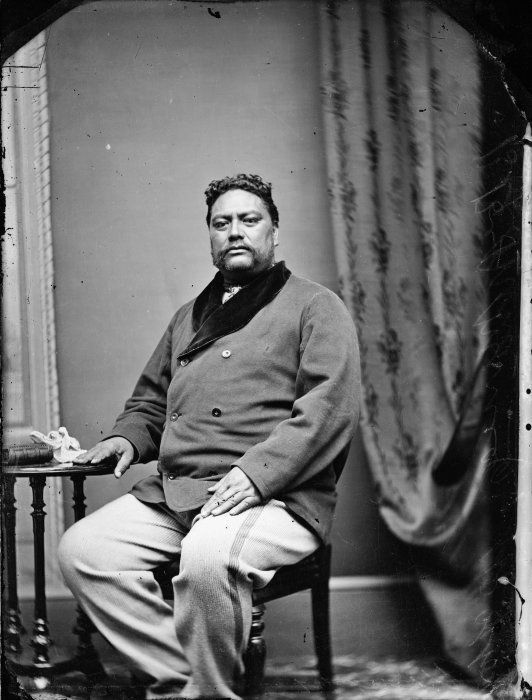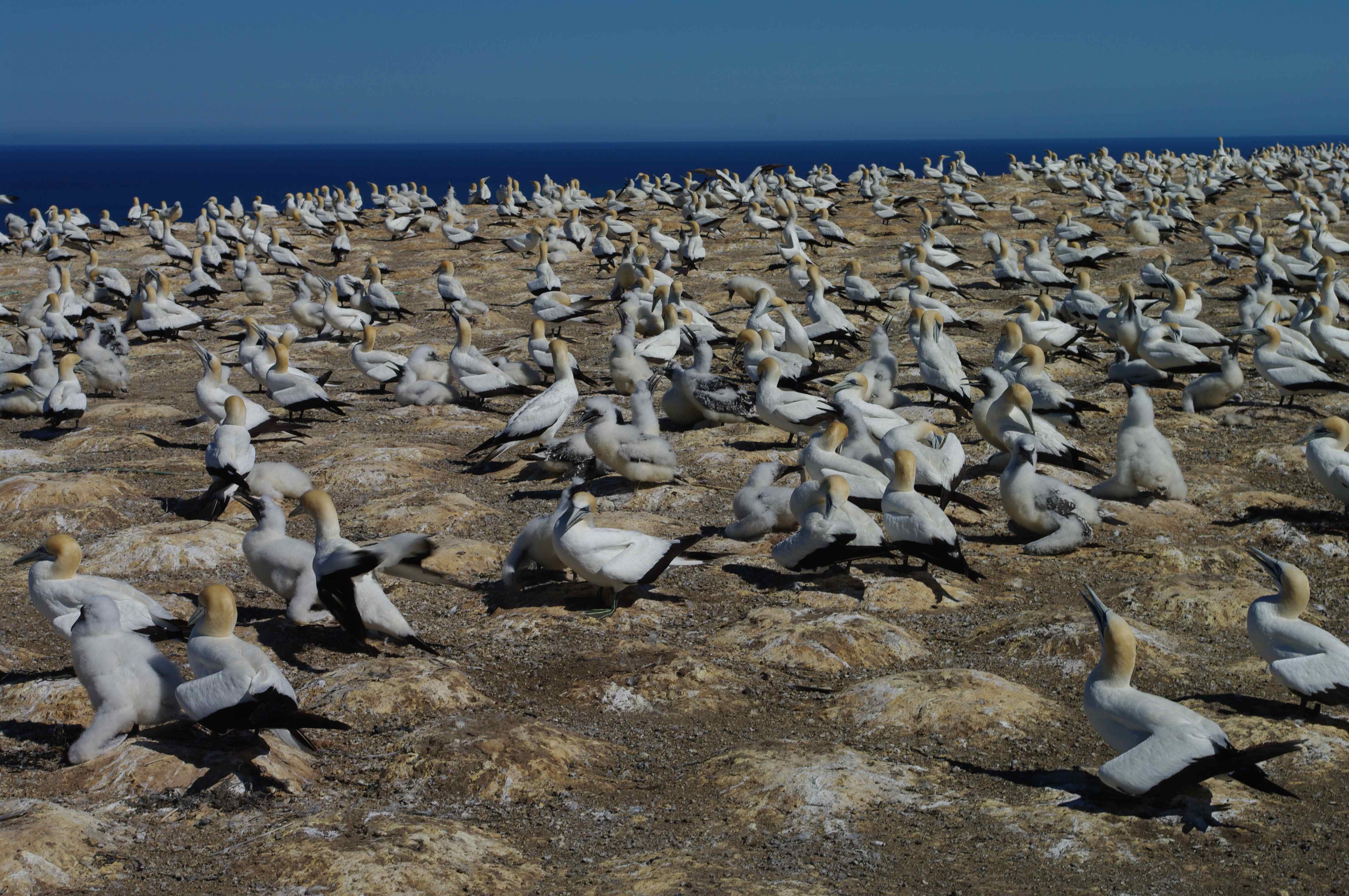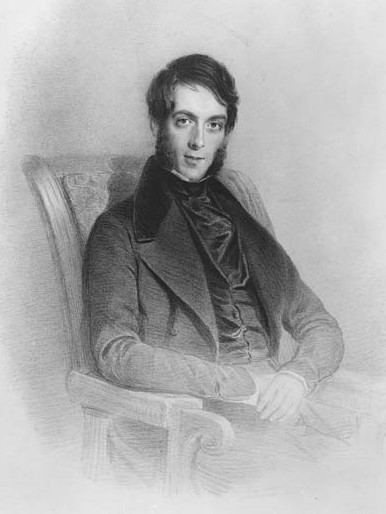|
Henare Tomoana
Henare Tomoana (1820/30s – 20 February 1904) was a prominent Māori leader and politician from the Hawke's Bay area in the North Island, New Zealand. He was of Ngāti Kahungunu and Ngāti Te Whatu-i-Apiti tribal lineage. In 1879 he was elected to the New Zealand Parliament for the Eastern Maori electorate, and in 1898 was appointed to the New Zealand Legislative Council. He was a convenor of Te Kotahitanga, the movement for an independent Māori Parliament. Early life Tomoana was born in the 1820s or early 1830s, probably in the Heretaunga Plains, near the present day site of the city of Hastings. He was the third son of Te Rotohenga (also called Winipere) from her second marriage to Hira Te Ota. Through his mother's first marriage, Tomoana was a younger half-brother of Karaitiana Takamoana and Te Meihana Takihi. His whakapapa links him to Ngāti Hawea as his principal hapu, however he was also connected to Ngāti Hinetahu, Ngāti Te Rehunga, and Ngāti Hori. Little is known ... [...More Info...] [...Related Items...] OR: [Wikipedia] [Google] [Baidu] |
The Honourable
''The Honourable'' (British English) or ''The Honorable'' (American English; see spelling differences) (abbreviation: ''Hon.'', ''Hon'ble'', or variations) is an honorific style that is used as a prefix before the names or titles of certain people, usually with official governmental or diplomatic positions. Use by governments International diplomacy In international diplomatic relations, representatives of foreign states are often styled as ''The Honourable''. Deputy chiefs of mission, , consuls-general and consuls are always given the style. All heads of consular posts, whether they are honorary or career postholders, are accorded the style according to the State Department of the United States. However, the style ''Excellency'' instead of ''The Honourable'' is used for ambassadors and high commissioners. Africa The Congo In the Democratic Republic of the Congo, the prefix 'Honourable' or 'Hon.' is used for members of both chambers of the Parliament of the Democratic Repu ... [...More Info...] [...Related Items...] OR: [Wikipedia] [Google] [Baidu] |
New Zealand Parliament
The New Zealand Parliament ( mi, Pāremata Aotearoa) is the unicameral legislature of New Zealand, consisting of the King of New Zealand ( King-in-Parliament) and the New Zealand House of Representatives. The King is usually represented by his governor-general. Before 1951, there was an upper chamber, the New Zealand Legislative Council. The New Zealand Parliament was established in 1854 and is one of the oldest continuously functioning legislatures in the world. It has met in Wellington, the capital of New Zealand, since 1865. The House of Representatives normally consists of 120 members of Parliament (MPs), though sometimes more due to overhang seats. There are 72 MPs elected directly in electorates while the remainder of seats are assigned to list MPs based on each party's share of the total party vote. Māori were represented in Parliament from 1867, and in 1893 women gained the vote. Although elections can be called early, each three years Parliament is dissolved and ... [...More Info...] [...Related Items...] OR: [Wikipedia] [Google] [Baidu] |
Te Kooti
Te Kooti Arikirangi Te Turuki (c. 1832–1893) was a Māori leader, the founder of the Ringatū religion and guerrilla fighter. While fighting alongside government forces against the Hauhau in 1865, he was accused of spying. Exiled to the Chatham Islands without trial along with captured Hauhau, he experienced visions and became a religious leader. In 1868 he led the escape of 168 prisoners, seizing the schooner ''Rifleman'' and sailing back to the North Island where he began a series of raids. A resultant military reprisal campaign became known as Te Kooti's War. He was pardoned in 1883 but continued to be active in spreading the Ringatū message of peace and reclaiming land from Pakeha. Early life Te Kooti's early years are obscure. He was born at Te Pā-o-Kahu in the Gisborne region as a son of Hōne Rangipātahi (father) and Hine Turākau (mother), of the Rongowhakaata tribe (iwi). Their sub-tribe (hapū) was Ngāti Maru, whose villages were situated near the Awapuni lag ... [...More Info...] [...Related Items...] OR: [Wikipedia] [Google] [Baidu] |
Pai Mārire
The Pai Mārire movement (commonly known as Hauhau) was a syncretic Māori religion founded in Taranaki by the prophet Te Ua Haumēne. It flourished in the North Island from about 1863 to 1874. Pai Mārire incorporated biblical and Māori spiritual elements and promised its followers deliverance from 'pākehā' (British) domination. Although founded with peaceful motives—its name means "Good and Peaceful"—Pai Mārire became known for an extremist form of the religion known to the Europeans as "Hauhau".Paul Clark, "Hauhau: The Pai Marire Search for Maori Identity," (1975) as cited by Belich in "The New Zealand Wars" (1986), chapter 11. The rise and spread of the violent expression of Pai Mārire was largely a response to the New Zealand Government's military operations against North Island Māori, which were aimed at exerting European sovereignty and gaining more land for white settlement; historian B.J. Dalton claims that after 1865 Māori in arms were almost invariably termed Ha ... [...More Info...] [...Related Items...] OR: [Wikipedia] [Google] [Baidu] |
Thomas Tanner (New Zealand Politician)
Thomas Tanner (1830 – 22 July 1918) was a 19th-century Member of Parliament in New Zealand. Born in Wiltshire, England, in 1830, Tanner arrived in New Zealand in 1850, and took up a large farm in Hawke's Bay in 1853. Tanner was a member of the Hawke's Bay Provincial Council from 1867 to 1875. He represented the Hawkes Bay parliamentary electorate of Waipawa from 1887 to 1890, when he retired and William Cowper Smith was re-elected to the seat; Smith had held Waipawa until 1887, when he was elected for the new electorate of Woodville (which only existed from 1887 to 1890). He contested the in the electorate and of the three candidates, he came last. He died at Havelock North Havelock North ( mi, Te Hemo-a-Te Atonga) is a town in the Hawke's Bay region of the North Island of New Zealand, situated less than 2 km south-east of the city of Hastings. It was a borough for many years until the 1989 reorganisation of local ... on 22 July 1918. References 1830 bi ... [...More Info...] [...Related Items...] OR: [Wikipedia] [Google] [Baidu] |
Havelock North
Havelock North ( mi, Te Hemo-a-Te Atonga) is a town in the Hawke's Bay region of the North Island of New Zealand, situated less than 2 km south-east of the city of Hastings. It was a borough for many years until the 1989 reorganisation of local government saw it merged into the new Hastings District, and it is now administered by the Hastings District Council. Overview The suburb, known locally as "the village", is situated on the Heretaunga Plains, less than 2 km to the south-east of Hastings. It is surrounded by numerous orchards and vineyards, and its industry is based around its fruit and wine production, and a horticultural research centre. The fertile soils that lie between Havelock North and Hastings has prevented urban sprawl linking them together. Havelock North itself is primarily residential and rural-residential housing, with only a relatively small and compact industrial and commercial centre. As a result, a large majority of its 13,000 residents commute eac ... [...More Info...] [...Related Items...] OR: [Wikipedia] [Google] [Baidu] |
Te Hapuku
Te Hapuku (died 1878), sometimes known as Te Ika-nui-o-te-moana, was a Māori leader of the Ngāti Te Whatuiāpiti hapū of the Ngāti Kahungunu iwi in Hawke's Bay, New Zealand, and a farmer and assessor. Born in the late 18th century in a small town called Te Hauke, in the first part of his life he was overshadowed in Ngāti Te Whatuiāpiti by his father's cousin Te Pareihe, until the latter's death in 1844. In 1838 Te Hapuku visited the Bay of Islands where he signed the 1835 Declaration of the Independence of New Zealand. In 1840 he initially refused to sign the Treaty of Waitangi The Treaty of Waitangi ( mi, Te Tiriti o Waitangi) is a document of central importance to the history, to the political constitution of the state, and to the national mythos of New Zealand. It has played a major role in the treatment of the M ... when it was brought to Hawke's Bay, but was eventually persuaded to sign. From the 1850s he was a keen seller of land, wishing to attract the economic b ... [...More Info...] [...Related Items...] OR: [Wikipedia] [Google] [Baidu] |
Cape Kidnappers
for "''the jawbone of Māui''" * for "''the fish hook of Māui''" , , type = Cape , photo = Cape Kidnappers.jpg , photo_width = , photo_alt = , photo_caption = Looking northeast towards Cape Kidnappers / Te Kauwae-a-Māui , map = New Zealand , map_width = , map_caption = Location of Cape Kidnappers / Te Kauwae-a-Māui in New Zealand , map_alt = , relief = yes , label = Cape Kidnappers , label_position = , mark = , marker_size = , location = , coordinates = , coordinates_ref = , range = , part_of = , water_bodies = South Pacific Ocean , elevation_ft = , elevation_ref = , surface_elevation_ft = , surface_elevation_ref = , highest_point = , highest_elevation = , highest_coords = , length = , width = , area = , d ... [...More Info...] [...Related Items...] OR: [Wikipedia] [Google] [Baidu] |
Waipukurau
Waipukurau is the largest town in the Central Hawke's Bay District on the east coast of the North Island of New Zealand. It is located on the banks of the Tukituki River, 7 kilometres south of Waipawa and 50 kilometres southwest of Hastings. History and culture Māori Central Hawkes Bay, where the town is located was settled by Te Aitanga a Whatonga, the descendants of Whatonga, grandson of Toi Kairakau. These were the Ngati Tara and Rangitāne peoples. In the mid 1500s the Ngāti Kahungunu invaded the area from the north and in the subsequent fighting drove the Rangitāne south into the Tahoraiti area ( Dannevirke). Warfare continued through the 1600s until the time of Te Rangikoianake. His first child Te Kikiri was adopted by the Ngai Toroiwaho to be their chief - he had mana over the Waipukurau district.Aramoana Beach, Historical and Archaeological Report, Patrick Parsons, Central Hawkes Bay District Council, January 2001 - Waipukurau Library copy Fighting broke out again ... [...More Info...] [...Related Items...] OR: [Wikipedia] [Google] [Baidu] |
Napier, New Zealand
Napier ( ; mi, Ahuriri) is a city on the eastern coast of the North Island of New Zealand and the seat of the Hawke's Bay Region, Hawke's Bay region. It is a beachside city with a Napier Port, seaport, known for its sunny climate, esplanade lined with Araucaria heterophylla, Norfolk Pines and extensive Art Deco architecture. Napier is sometimes referred to as the "Nice of the Pacific Ocean, Pacific". The population of Napier is about About south of Napier is the inland city of Hastings, New Zealand, Hastings. These two neighbouring cities are often called "The Bay Cities" or "The Twin Cities" of New Zealand, with the two cities and the surrounding towns of Havelock North and Clive, New Zealand, Clive having a combined population of . The City of Napier has a land area of and a population density of 540.0 per square kilometre. Napier is the nexus of the largest wool centre in the Southern Hemisphere, and it has the primary export seaport for northeastern New Zealand – which ... [...More Info...] [...Related Items...] OR: [Wikipedia] [Google] [Baidu] |
The Crown
The Crown is the state in all its aspects within the jurisprudence of the Commonwealth realms and their subdivisions (such as the Crown Dependencies, overseas territories, provinces, or states). Legally ill-defined, the term has different meanings depending on context. It is used to designate the monarch in either a personal capacity, as Head of the Commonwealth, or as the king or queen of their realms (whereas the monarchy of the United Kingdom and the monarchy of Canada, for example, are distinct although they are in personal union). It can also refer to the rule of law; however, in common parlance 'The Crown' refers to the functions of government and the civil service. Thus, in the United Kingdom (one of the Commonwealth realms), the government of the United Kingdom can be distinguished from the Crown and the state, in precise usage, although the distinction is not always relevant in broad or casual usage. A corporation sole, the Crown is the legal embodiment of execut ... [...More Info...] [...Related Items...] OR: [Wikipedia] [Google] [Baidu] |
Māhia Peninsula
Māhia Peninsula (Maori: or ) is located on the east coast of New Zealand's North Island, in the Hawke's Bay region, between the towns of Wairoa and Gisborne. Rocket Lab has set up its Launch Complex 1 close to Ahuriri Point at the southern tip of the peninsula to launch its Electron rocket. Currently, it is being used as a commercial launcher of small satellites in the range of 135–235 kg, and miniature satellites called CubeSats. New Zealand's first orbital space launch took place from Launch Complex 1 on 21 January 2018. Geography The peninsula is long and wide. Its highest point is Rahuimokairoa, above sea level. The peninsula was once an island, but now a tombolo joins it to the North Island. Demographics The statistical area of Mahia, which at 472 square kilometres is larger than the peninsula and includes Nūhaka, had a population of 1,119 at the 2018 New Zealand census. This was a decrease of 153 people (−12.0%) since the 2006 census. There were 456 ... [...More Info...] [...Related Items...] OR: [Wikipedia] [Google] [Baidu] |



.jpg)




.jpg)
